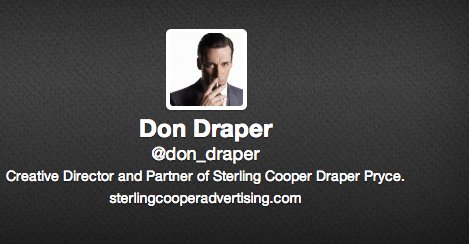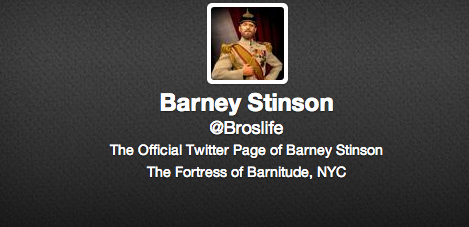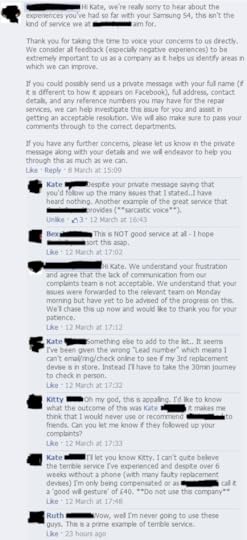Erik Qualman's Blog, page 602
May 2, 2014
Five Key Ingredients To Make Your App Go Viral

Creating an app that goes viral is one of the highest achievements an app developer can attain. Getting an app to go viral isn’t a marketing strategy that can be executed once the app is launched; instead, virality needs to be built into the app from the beginning.
Here are five key ingredients into creating a viral app:
1. Effortless Design
The best apps appear so effortless that the design fades into the background, almost as if it’s not even there, making the task at hand smooth and easy. The flow of the app is necessary in order to engage users into staying on the app for extended periods of times without getting bored.
The best ROI of mobile apps come from effortless apps like Pinterest or Instagram, for the user loses a sense of time and self by becoming completely immersed. And, these apps have a hidden “gem,” meaning they force the user to share their findings with other users, thus aiding in the app’s virality.
2. Reward For Use
A basic psychological principle, the best tool to encouraging a certain behavior is to reward. When applying that to apps, the most popular apps motivate its customers to share the app with their friends by giving them a gift or reward for each friend they get to use the app.
Inviting friends should be a core process in the app, rather than an afterthought, thus somehow connect sharing with part of the app’s daily usage. In the case of Pinterest, the act of repinning constitutes as sharing. Additionally, Pinterest connects with other social media sites like Facebook, which advertises to other people the use of the app.
3. Hand Over Control
Virality and privacy are polar opposites. Thus, for an app to achieve virality without invading privacy, it must be transparent. Be open and up front about what the app is sharing, and give users complete control over whether to share.
Many users who do not yet trust the app will not want anything to be shared, and if they cannot control the privacy, they will stop using the app or delete it.
4. Bring Them Back
The more people that use the app, the longer the app will remain successful. By word of mouth and online sharing, the app will continue its growth in popularity, which will increase profits.
Send users useful notifications that motivate them to return instead of waiting for them to start using the app again. This will encourage users to continue using the app, otherwise users might forget to use it.
5. Be Useful To A Lone Person
The app should benefit users, even without the social aspect. While this is not a requirement, it increases the chance of virality, for users will want to share the app because it serves a purpose outside of social sharing.
While there is nothing that guarantees that an app will go viral, these five steps increase the chances toward an overwhelmingly successful app.
[image error]
Consolidate and Connect: Tips to Increase Productivity on Social Media

There are many tools that coach small businesses and other social media users about how to use various networks to reach out to customers. However, it’s also important to recognize when the time you spend on social media isn’t as effective as it could be. If you suspect social media has become more of a time sink than a solution, keep reading and learn how to make meaningful improvements.
Target the Influencers
Many people spend a lot of time casting a wide net on social media, or in other words, focusing on a very broad target audience, and hoping a substantial portion of those individuals will respond favorably. Instead of doing that, pay attention to people who have a high level of influence and can spread it to others by way of their association with you.
For example, if you’re the social media manager of an environmental supply rental company, it may be worthwhile to follow members of your local community such as the mayor, or anyone who’s a city council member. Those individuals typically interact with dozens of people on a daily basis.
If they converse with local organizations that get involved with environmental matters, the few community influencers you’re following on social media may spread the word to many other people who are held in high regard. That’s a smart way to potentially get your company recommended as a great solution if environmental equipment is needed by a community organization, and the people in charge would prefer to rent it rather than buy.
Be Choosy
Perhaps your time on social media could be better spent on sites that target professionals, such as LinkedIn. It all depends on what your goals are, but if you’d like to reach peers instead of solely communicating with customers, LinkedIn may be the ticket. A survey conducted by DHR International discovered the majority of executives prefer that site for social interactions.
Also, try to set aside a limited amount of time each week or month to experiment with using new social networks. Some may have value, but don’t register any new accounts without first doing research to see if the sites are likely to support your company’s goals.
Post Less, Engage More
Creative content has power no matter which social network you use. However, if most of your content is made up of posts that are doing very little or nothing to advance your business, it’s time to change your ways.
As a starting point, devote significantly more of your social media time to engagement, rather than distributing content. Try a 70/30 split of those two things for a two-week period and keep track of whether that change boosts your metrics. Make insightful comments and strive to be helpful whenever possible. That approach should help bolster your social media reputation, and it will also help you have a better understanding of the kind of content your audience prefers.
Block Out Social Noise
It can be tempting to follow anyone and everyone on social media, especially if you want to give the impression you’re an active user. That urge is understandable, but it may do more harm than good.
Facebook has filters that allow you to “like” a company or individual without receiving associated notifications. Play around with those if you’re concerned your feeds are getting too crowded with posts from people who aren’t peers or members of your target audience.
If you often look at the clock with a shocked expression after realizing how much time you spend on social media, but aren’t noticing great results for your business, try the ideas above. They could streamline your efforts and strengthen your outcomes.
[image error]
5 Blogging Tips to Earn Money

Making money in blogging seems like a tough job but it doesn’t have to be. Many people are already jumping on writing a blog because of the success stories they’ve probably heard from other bloggers. In creating your website, you only need a minimum investment and a lot of effort to establish your blog.
Before you start creating your blog site, you have to consider first your target niche. You cannot just start writing a blog post if you have no idea what to write about and whom you’re writing for. One of the golden rules in blogging is knowing your target market. Apart from that, you need to choose which platform you’re going to set up for your website.
1. There’s no secrets in successful blogging, you just need to work hard for it.
- You cannot get rich quickly in blogging. Sorry to disappoint you but there is no fast and easy secrets to earn a living as a blogger. To make your online business earn money, you can do three things. First, learn everything on how you can generate income from your blog posts. Secondly, choose the best blogging strategies that will work for you and lastly, invest on it.
2. Establishing a blog takes time.
- Before you reap rewards in your blogging journey, you have to sow the seeds first. Meaning, you have to wait patiently before it grows. Like any start-up business, you have to invest time, effort, and money before you can able to generate income from it. Do not expect a quick investment return from it because that’s impossible to happen. Wait for the right time and just work on how you can engage more of your potential readers to your website.
3. Share something valuable and interesting in your blog.
- Blogging is connected to writing. To attract visitors in your website you have to offer something that might interests them. Improve your writing style and be creative in composing your content. Create a catchy headline and do not forget to include a “call to action” message at the end of your content.
4. Ask professional advice on how to promote your blog.
- If you have no knowledge in promoting your blog online you are free to seek professional advice. Talk to some successful bloggers or internet marketer and get some useful tips on how you can get good marketing results in your blog.
5. Be yourself and add some personal touch in your writing.
To gain more readers, you have to be true to yourself. Do not pretend to be somebody else. Instead, just show off your warmth personality and share some personal experience so your readers can easily relate to you. Build connection to your readership. Interact with them and try to help them with their problems. This is a good way of relationship building.
Blogging is an interesting activity. It is not easy to establish a very good website but once you get the hang of it, your blogging journey will become a success.
Do you have any blogging tips that can increase your profit? Share your thoughts below!
Thumbnail: http://tinyurl.com/q4srela
[image error]
How to Recover from Penguin 2.0 Penalty

Is your traffic and SERP’s ranking plummeting tremendously? Do you see a major drop compared with a day or two before? If this scenario sounds much closer to home then you are definitely hit by the Penguin 2.0 from Google.
How Does Penalization Occur?
Not-so-long-ago, a number of SEO companies used to employ link networks and inferior link building tactics. A lot of companies found themselves benefitting from the setting up of links deliberately designed to manipulate page and site rankings. SEO executives had a field day refining their link manipulation prowess, and for some time, it all seemed to be the way to go. That is until Google unleashed the furious Penguin, which came in a series of 5 successive updates. The release of Penguin, just as that of Panda and the page layout algorithm update before it, sought to sanitize the ranking of websites by ensuring that only those websites that adhere to the Webmaster guidelines and are of a high-quality get to be ranked highly. Most webmasters are at a loss as to what to do with their plummeting traffic and rankings. I am going to take a look at the right course of action to get you out of the mud.
What to do When Struck by Penguin
Conduct Backlink Profile Analysis
The first step is to conduct an exhaustive backlink profile analysis. Examine the anchor text spread of all the backlinks pointing to your site including the low quality ones. Although the vast majority of tools that are designed for use in such situations are paid for, some good free tools are also available such as Google webmaster tools, Bing webmaster tools, Netpeak Checker, Majestic Link Index, and Ahrefs. The objective of such analysis is to determine the amount of keyword anchor text in existence as compared to branded, junk, or URL anchor text. As you proceed with the analysis, make a note of all the contact details of the webmasters that you might need for the removal of the backlinks.
Apart from the aforementioned, you must also keep in mind that no one tool can give you a complete picture and much will be left to your judgment. You can also shed some light on the picture by contacting your previous SEO agency to inquire whether they utilized any black hat tactics. In carrying out backlink analysis, devote your energies to ‘follow’ links only as they are what Penguin is after.
Isolate Unnatural Links
The process of identifying unnatural links is quite an important one. It is a two-pronged effort that involves the use of tools in the identification of all potential unnatural links followed by manual analysis. The first step is to down load your backlink profile from a number of sources. Some of the best sources are:
Google Webmaster Tools
Bing Webmaster Tools
Link Detox Tool and
Majestic SEO Tool
Link Detox has a distinct ability to raise red flags for all back links characterized by high, moderate and low risk. Majestic SEO gives you an ability to take a closer look at all backlinks originating from low citation and trust flow domains.
Penguin has a Strong Aversion to:
Comment spam
Spammy blog-roll links
Classified spam
Link networks – private and public network
Forum signature spam with exact march
Sitewide backlinks
Free for all directories
Article marketing links with the blemish of signature spam at the bottom
Exact match anchor text ‘widget app’ links
Remove Links Manually
The initial step in ridding the unnatural links rests with you. You must remove all the offending links that you have control over. Examine all SEO reports to identify all the sources of unnatural links. Your previous SEO Company can be of great help in this effort.
Contact Webmasters of the Unnatural Link Sources
 When you are done with the manual removal of all links that you preside over, the next step is to contact all the webmasters of the sites that have unnatural links pointing to your website. If the address is not mentioned on the website, you can try using domain tools to find it. After sending your initial request, wait for about a week before sending a reminder. In every communication, remember that the webmaster has no obligation to do your bidding, therefore, be polite. This is not an instantaneous process and may take a couple of weeks.
When you are done with the manual removal of all links that you preside over, the next step is to contact all the webmasters of the sites that have unnatural links pointing to your website. If the address is not mentioned on the website, you can try using domain tools to find it. After sending your initial request, wait for about a week before sending a reminder. In every communication, remember that the webmaster has no obligation to do your bidding, therefore, be polite. This is not an instantaneous process and may take a couple of weeks.Google Disavow Tool
Your last weapon in the unnatural link removal arsenal is the Google Disavow Tool. When you unleash The Disavow Tool on the remaining list of links, remember that it is preferable to disavow a whole domain that targeting individual pages.
Re-Evaluation, Reconsideration and Anchor Text Ratio Dilution
After completing the disavow process, re-evaluate your backlink profile by conducting another analysis to see where you stand in contrast with your starting point. You can enhance your position by building quality links to dilute your anchor text ratio although this is not always necessary except in instances where there is a dire need for anchor backlinks diversification. Where you had been sent a manual penalty notice in Google Webmaster Tools, it is important to make a reconsideration request. Apart from that it, is not really necessary to do the request.
What to Expect
If you have made a submission for reconsideration you can go no further than simply waiting for the determination on your case by the Google’s web spam team. In such situations, it has been known to pay to be big. Big companies go through this process with great ease.
If you had not received a penalty notice, there is little that you can do apart from waiting for the next Penguin update roll out for you to recover and realize the fruits of your efforts.
thumbnail: http://tinyurl.com/n9axbev
[image error]
April 30, 2014
Social Media a Healthy Option for Women

 According to Womenshealth.gov, more than 17 million women in the U.S. are uninsured. That’s roughly 20 percent of women.
According to Womenshealth.gov, more than 17 million women in the U.S. are uninsured. That’s roughly 20 percent of women.
These women are more likely to develop serious health problems, due to the fact that they wait too long before seeking treatment and are not always able to afford the price of necessary prescription medications.
Health insurance options for women
With so many different plans and so many different options, navigating the world of health insurance can be confusing.
Luckily, the health insurance guide for women can help explain the different types of coverage and what is best for certain women.
Women can choose private plans, including fee-for-service or managed care, or public plans, which include Medicare or Medicaid.
Using social media to find health insurance
Research shows that about 40 percent of individuals go online to find health care information. With the recent boom of social media, insurance companies are realizing just how valuable it is to have an online presence.
Consumers can start by looking at various health insurance companies’ Facebook pages and Twitter accounts.
They can see what types of plans the companies offer and read what current customers have to say about them. Social media is all about connecting – and top health insurance companies know that this is the wave of the future.
Top companies using social media
EveryMove ranked the top health insurance companies based on how they interact with consumers.
The top two companies are Capital District Physicians’ Health Plan and Blue Cross Blue Shield of Arizona. Both utilize social media regularly, with Capital District having photo sweepstakes and Blue Cross using a Spotify account so members can share songs.
EveryMove also found that 97 of the 100 health insurance companies use Twitter and LinkedIn, with 87 of them using Facebook.
ObamaCare and women
ObamaCare is absolutely using social media to market to both women and young adults, who are the primary users of social media. ObamaCare is focusing on providing preventative health care services to women.
Services that are fully covered by insurance include well-women visits, gestational diabetes screening in pregnant women, domestic violence screening and counseling, breastfeeding support, mammograms and more, according to ObamaCarefacts.com.
How companies should use social media
Health insurance companies need to have a social media plan in place in order to grow their company and benefit their customers.
You can start small by creating a blog, Facebook page or Google+ account, monitor your outcomes and go from there. Interact with customers, respond to questions and complaints, learn from your customers and change your company for the better. Within a year, you’ll want to have a strategic social media marketing plan in place.
Social media is not just for the customers, though.
Health insurance companies can use it to recruit the best of the best of employees. LinkedIn is the social media platform that companies use to connect with other companies and find qualified candidates.
Social media has only been growing over the years, and it’s not expected to disappear anytime soon.
Photo credit: oopgo.com
[image error]
April 29, 2014
eCommerce: What You Gain From Taking Your Business Online

It’s no secret that the Internet has changed the way we do just about everything. Whether it’s research, communication or shopping, few of the affected areas even resemble their former selves, so why should your business be any different? The answer, of course, is that it isn’t. More people than ever are buying things online, but visibility isn’t the only reason to make the transition to e-Commerce. Here are the top benefits you’ll bring to your company and your brand by going digital.

Image Courtesy of BuySellAds
Widen Your Reach
In the time it takes you to make and publish a website, you can take your company from a hole in the wall to an international enterprise. For the most part anyone, anywhere in the world, can access your website and buy products from your company. Suddenly, serving a stranger in the middle of Tibet becomes as simple as if they wandered into your brick and mortar store. There are no more regional or geographic boundaries.
Boost Your Bottom Line
An IPSOS survey commissioned by PayPal revealed that 64% of small businesses report an increase in sales resulting from Internet operations, and 73% said they saved money by decreasing administrative costs. Whether you’re pulling in more revenue or reducing costs, your numbers are improving. If you can do both, you’ll be adding a significant boost to your bottom line. Even though building and maintaining a website carries a certain cost, the balance is certainly still in your favor. Don’t view it as an extra expense, look at it as spending money to make money.

Image Courtesy of Census.gov
Level the Field
In the days of olde, small business couldn’t compete with corporations without expanding to new locations. Going online doesn’t just let you cast a wider net, it also allows you to run with the big boys without the need for physical real estate. Amazon is certainly a dominant force in the ecommerce world, but consumers are always looking for deals and alternatives. You can offer them a choice. Nasty Gal, a fashion line for young women, used social media to grow over 11,000% in three years If you’re boutique feeling, then let your online presence reflect that. If you offer a more personal touch, then sell that. It’s all about setting yourself apart in a world where appearances, not physical locations, are everything.
Easy Money
The online marketplace simplifies the entire transaction process. It’s all handled automatically through whatever system you’ve installed on your site. There is no cashier required. This can free you up to focus on other more important aspects of your business such as organizing inventory or solving any of the daily problems that a business owner must face. There are even hybrid options available through Shopify that connect your online inventory and transaction to an in-store hardware/software setup, giving you the ease of online purchasing inside the store.
Stay Open Longer
24 hours a day, in fact. The Internet is always on and so is your website. Time zones and operating hours are quickly becoming a thing of the past. People can place order through your online store in the middle of the night and it will be waiting for you when you start your day in the morning. Since many a purchase has been stalled by the inability for the customer to make a purchase, you’re also avoiding the loss of a sale to a competitor who was still open.
Project Professionalism
Rise above the mom and pop brand and show yourself as somehow who keeps up with tech trends, improving your reliability and reputation among potential customers. You can also shape your image regardless of your product. Just look at Dyson, the people who make vacuums. They portray heir household cleaning products with a luxury that is on par with high end car websites or other luxury items. You can shape the way people see you in a way that you would not be able to with a small, single store next to the railroad tracks.
eCommerce not only broadens your reach, but it saves you money while making more sales with less cost and effort. It puts you squarely in charge of your public image while taking your entire business to the places where customers are already shopping. It’s a no brainer.
Thumbnail: http://tinyurl.com/l3d7c28
[image error]
Being More Social in the Toy Aisles

 Gone are the days when parents had to scour newspaper ads in search of the best toy deals for their children.
Gone are the days when parents had to scour newspaper ads in search of the best toy deals for their children.
Thanks to almighty social media, more and more toy sellers are using social platforms to promote the toys that every kid goes crazy for.
With social playtime in mind, here are a number of ways toy manufacturers can get social with their toys:
Highlighting Product Reviews
Parents put a ton of work into finding the perfect toy for their children, which of course translates to online research. And, at the forefront of online shopping research are product reviews.
Whether it’s a $20 knick-knack or a $500 play set, parents let online reviews from other parents’ fuel their purchasing decisions.
For toy manufacturers looking to get ahead of the social game, this means not only embracing online reviews, but highlighting them in various social avenues.
Sure, toy manufacturers will have to step up their game in terms of customer satisfaction, but they’ll also have to remedy any negative reviews they might receive.
Making Customer Research Effortless
It’s pretty difficult for parents to research toy brands if they don’t even come up in search engine results. With that in mind, if toy manufacturers really want to succeed socially, they need to have an easy to find online presence.
Many of the major toy manufacturers and distributors not only have websites and blogs, but also active social media accounts. Why?
Well, it’s simple, the more socially accessible toy stores are, the more opportunity for customer discovery. For example, Walmart is an expert in utilizing social platforms to promote their massive selection of toys as well as other merchandise.
Focusing Demographics
All research aside, if the brand doesn’t find the right customer, it doesn’t matter how socially savvy the marketing is. Because of this, it’s important for toy manufacturers to concentrate their social marketing efforts on the right audience.
The majority of daytime Facebook users are stay-at-home mothers, which is also the target demographic for toy sales.
What this means for toy manufacturers is it’s beneficial for them to unleash their social marketing campaigns during the weekdays. But, the main thing for toy manufacturers to remember is, whether it’s a stay-at-home mom or dad, it’s always important to know the audience.
Taking Advantage of the Holiday Rush
Cyber Monday and social media go together better than kids and their toys, which is exactly why toy manufacturers should be on their social A games when the holiday rush rolls around.
Social marketing is important all year long, but parents are really scouring their computers and smartphones for toy deals around Christmas.
This means toy manufacturers should amp up their social campaigning and customer interaction in order to better promote their brand and take advantage of the holidays.
Encouraging Social Sharing
Social media is all about word of mouth and nobody spreads the word like parents who are satisfied with the toy purchases they make for their kids.
When toy manufacturers promote their toy brands on social media, it also promotes social sharing. And, the more shares, likes, and tweets, the more exposure.
As toy manufacturers get social with their marketing efforts, toys fly off the shelves.
Photo credit: somdnews.com
[image error]
April 24, 2014
The Unexpected Set of Influencers for your Brand

Influencers are defined in many ways and come in many packages.
Just to name a few:
The Journalist / Blogger
The Celebrity
The Subject Matter Expert
The Advocate
The … list goes on.
Brands have realized the advantage of partnering with influencers. For example, style bloggers like Aimee Song and Daniela Ramirez have worked with brands from 7 Jeans to Sole Society and many more. They are partnered with to be a microphone, a voice, a face, and influence their audiences to consider the brand. These influencers bring stories, content, and social engagement and in turn can make a deeper impact and attract new audiences.
But who’s this unexpected influencer I speak of in the title?
It’s actually quite entertaining, I must admit. The trend isn’t new, but the increase of these types of influencers is definitely flooding the Twitter streams as of late… The Fictional Influencer.
Who is this you say? The characters you love on TV and in movies. They now have a voice that lives on. A voice that shares thoughts during cultural events and spreads content that is relevant to that character and the presence they have in our lives.
Here are a few that I enjoy following – whether for fun – or because I truly enjoy the character and look forward to what they have to say and share when they Tweet.
Frank Underwood (there was no doubt that he would be on this list)

Don Draper

Bill Lumbergh

Barney Stinson

Darth Vader

And yes many of these accounts are verified by Twitter.
To those creating content and characters – another extension for your story to live on. Brands, another way to partner and influence.
[image error]
Taking Customer Services to the Next Level: The Importance of Using Multiple Platforms to Engage with your Target Audience

Gone were the days when customer services were limited to snail mail and phone calls. A strongly worded letter used to be the ultimate form of complaint whereby the disgruntled customer would passive aggressively take out their woes on the paper and slam in in the post box and wait for a reply (which they would sometimes never get).
The advent of the internet has given rise to a multitude of platforms to interact with target audience and client base: Facebook, Twitter, LinkedIn, email and live chat to name a few.
The largest difference between traditional forms of communication and online interactions through social media is that everyone can see. Whether it’s a complaint, a show of thanks or a query; both the business and the customer can use the interaction to work in their favour.
Complaints
When it comes to a complaint, displeased customers often choose to use social media to soap box their negative experience. Often, their aim is to tar the brand and share the problem they have had. An example of this would be Kate complaining about the negative experience she had with a certain brand on their Facebook wall:
Kate writing this on the company’s wall means that everybody can witness the bad service that she has experienced. This is a great opportunity for Kate, to get her problem escalated to the right people and for the company to demonstrate excellent customer service. To a certain extent it is also the perfect opportunity for Kate to reap some form of revenge, she is able to ‘punish’ the company for the poor service she experienced by sharing it with the rest of the world on their company page.
Above is an example of it not going too well, below shows how Sky have tackled the problem:
Offering Live Chat is a great way of continuing the interaction and making sure that the issue is resolved. At least attempting to solve the problem is better than completely ignoring it.
Live Chat is another fantastic way of improving customer service, QMS, a company who offer ISO 9001 certification, have found that it is a great way to tap into audiences who would not usually phone or use other mediums for queries and as a result have increased their sales. Having it as a pop up when you arrive on the website is a great prompt to start interaction and therefore some sort of relationship. Like social media, live chat is great for younger generations who seek the immediacy brought by internet culture but perhaps don’t think to enquire or phone.
Queries
Responding to all of the queries – however dumb they may seem is a great way to improve your brand on an individual level, and sometimes, when done correctly on a national level. A perfect example of this happened earlier in the month:
This works in both the customer’s and the business’ favour. The response will make Immy ‘BADMAN’ Bugati feel valued and his query has been answered. For Argos, this was a great PR move, this tweet was covered in many papers across the UK and was also shared almost 10,000 times.
Praise
Similar to complaints, people will often use social media to soap box a good experience and offer thanks for the positive encounter they have had. Encouraging praise on social media is a great idea because it acts as positive reinforcement for the consumer, it also acts as testimonials for the company and is great sharable content.
A bakery, Pandoras Kitchen took a screengrab of Rootle’s Instagram and republished it on theirs. Sharing this image not only advertises the food they make but also makes the person who originally took the picture feel special, enhancing the person’s customer experience.
Although being active on all social media channels can be time consuming, try to respond to the majority of social interactions on all of the platforms, negative or positive. It’s a fantastic way to increase brand awareness and develop a relationship with the consumer. Remember, unlike the traditional methods of phone calls and post, when it comes to the online world people are able to ensure that they get through to the right people (or are forwarded to the correct department) and they get through immediately. This sort of direct communication brings a speedier response and also helps to increase customer satisfaction.
Being able to tap directly into your customer base online is a fantastic way to engage with your consumers and improve brand awareness and satisfaction. However, it’s important not to overlook traditional methods of communication.
Sainsburys demonstrated fantastic customer service when they received a letter from a young girl, enquiring about bread. Her mother posted this interaction on her blog and it went viral resulting in the bread being renamed from ‘tiger bread’ to ‘giraffe bread’. It is possible that this letter could never have been posted online, however the reason it was, was a result of excellent customer service. This demonstrates that people are willing to and have the power to share all of their experiences should them deem it interesting or necessary.
It’s also important not to overlook email when customer service is concerned; in this day and age many people prefer to use this as a method of communication, particularly when it comes to complaints. Emailing means that a log of the back and forth interaction is held by both parties meaning that if anything is called to question they can refer to the previous communications.
So whatever your market, it’s important to consider all platforms of potential interaction that you can have with your client base. Whether your customer service team is large or small, remember that the staff will need to have a common voice and tone to project the image that you would like to portray.
Thumbnail: http://tinyurl.com/mpxxyf3
[image error]
April 23, 2014
Using Product Page Linkbait for Ecommerce

Creating truly engaging content to build links and gain social shares for an ecommerce business can often prove a little tricky. That’s where thinking outside the box and creating high quality linkbait comes in.
Linkbait, put simply, is content that has value and is share worthy. The ultimate goal is to attract links, along with gaining social shares and exposure. Done well, linkbait can be an incredibly cost effective way to increase your online presence and boost your position in search rankings. So how can it be used in ecommerce? Product pages, both fake and real, are one of the most popular choices.
Here’s a look at some successful ecommerce linkbait and why it did so well.
ThinkGeek’s Canned Unicorn Meat
With over 29k of Facebook shares and thousands more from twitter and Pinterest, this page from ThinkGeek is a truly successful piece of linkbait. For only $9.99, shoppers can purchase a can of delicious unicorn meat (later revealed to be a slightly less gruesome ‘dismembered stuffed unicorn in a can’). Not only was this fake page incredibly successful but it’s also a very low maintenance and potentially low cost piece of content. The content of the page also gives value (and more reason to share) with its hilarious product description and image gallery. ThinkGeek even invites customers to upload their own ‘Action Shots’ – another great way to encourage people to share.
Old Spice’s Fake Product Sites
Old Spice are known for their hilarious and unusual marketing, and these fake product websites didn’t disappoint! The cologne brand created 9 fake websites, each for an unusual and unnecessary product such as Executive Spray Tan Parties or Flavoured Soul Patch Powder. Click anywhere on the page and you face a video “Internetervention” from the Old Spice guy. Not only did this campaign create a huge buzz, generating plenty of links and shares, but Old Spice also cleverly added a call to action. Viewers were encouraged to share the fake pages with friends, tricking them into an Internetervention themselves and of course socially sharing the sites.
This is a great example of creating linkbait to tie in with a popular topic. Uploaded to coincide with the release of the hugely popular Hobbit films, this fake product page featured a replica of Bilbo Baggins’ door complete with Gandalf’s rune. It’s not only worth creating content to coincide with current topics but also specific ones. This fake product was picked up by fan websites and shared amongst the online community of Hobbit fans. Making something with value to a certain group of people can also give you a specific starting point for outreach and PR.
Wish’s 10 Downing Street Experience
It’s not just fake products that can net you links and shares. Gift experience providers Wish caused a stir with this fantastic fake experience page. Customers were presented with the opportunity to purchase a trip into this highly regarded political location for the small sum of £250,000. It’s not just the idea that makes this a great piece of link bait, but also how well it is executed. The copy that accompanies the product is funny enough to give value to readers and make them laugh, a great way to get it shared.
[image error]













